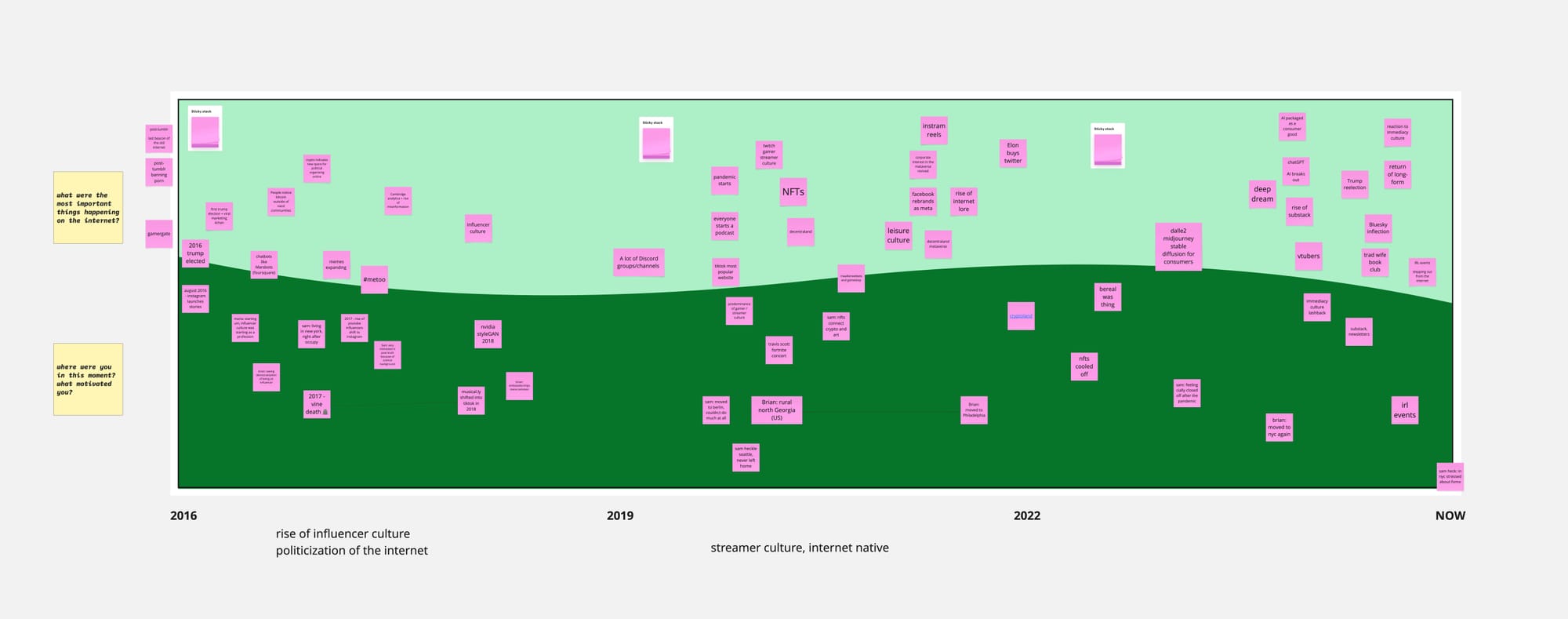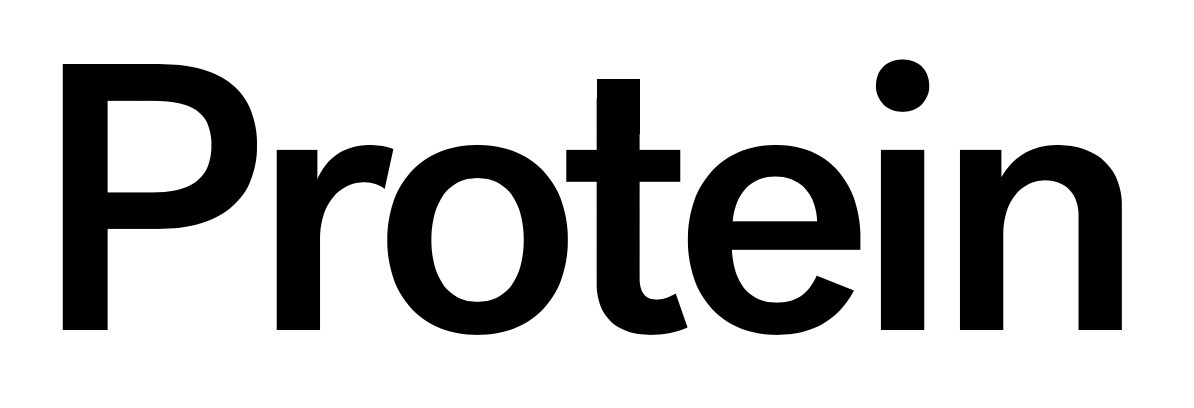New Institutions, Squad Energy and Networked Spirituality
Making sense of technologies that are constantly remaking us.

To celebrate the release of their new book — Other Internet 2018-2024 – we hosted a collaborative workshop led by Toby Shorin, Laura Lotti and Sam Hart.
For those unfamiliar with Other Internet, they’re on a mission to better understand how digitalisation shapes our minds, societies and economies – and to figure out how we can all use new media technologies for good. Think of them as curious explorers charting a path toward a future where tech works for people, not against them.
As a research collective, they recognised the significance of these new models, and became both a leading participant and a keen observer of Web3’s institutionally disruptive technology scene, generating a body of work and ideas that have permeated contemporary discourse, including: squad wealth, the lore zone, public goods funding models and headless brands (which was the inspiration for our permissionless brands piece).
The decentralised non-profit have a knack for decoding the new behaviours resulting from these new technologies as well as creating frameworks that help people thrive in today’s hyper-connected world. As old-school institutions take a backseat to networked publics, digital communities and crowdsourcing magic, the Open Internet believes it’s time to dream up fresh prototypes for how we gather, organise and create together.
Back to the launch last night: we had 50+ people join us for a 90-minute sense-making workshop charting our relationship to the Internet and Internet culture, as well as the existential narratives of this period that we all lived through together – though likely experienced in different ways. Below are some of the key takeaways.
Laura Lotti

At the beginning, there seemed to be high hopes for the Internet – a lot of awareness around how social media isn't really serving us, and actually contributes to the homogenisation of culture, especially Internet culture. Those hopes were shaped by things like research and maybe even the launch of Ethereum back in 2016.
Then, a few years later – maybe around the time of COVID – things got murkier. The fog of the pandemic made it really hard to make sense of what was happening. There was Zoom fatigue, Discord overload and so on. But at the same time, Web3 started making some of those early hopes feel real. People talked about connecting more deeply with others – amazing people from all over the world – in ways that maybe were possible before, but became more common or visible during that time. COVID, of course, pushed everyone online, which probably increased those kinds of possibilities.
Now, looking at the present, we’re noticing a return or maybe a new take – on the idea of the artisanal website. Someone mentioned how they’re putting care into creating something unique, handcrafted, even bespoke.
We’re still hopeful – but now it feels like that hope isn’t so much placed in technology or the economy. It’s more in people, and in creating the future we want to see, together, collectively.
Sam Hart

Some of the big things we talked about at the beginning were the rise of influencer culture and this shift from people just posting casual Instagram stories – like what they had for breakfast – to more formalised roles, like brand ambassadorships toward the end of that period.
In the background of all this, we had major political shifts – like Trump getting elected for the first time – and a growing politicisation of the Internet, especially with movements like #MeToo. I’d say those were kind of the defining moments from a few years ago.
Then, in the middle of all that, the pandemic really punctuated things. It intensified so much of the online experience. We saw the rise of Twitch streaming, and a more deeply embedded gamer aesthetic or vibe – sort of an “area code” of the Internet. NFTs also came up – Internet-native objects, basically – so we started to see this Internet-native lifestyle forming around those things.
Toward the more recent end of the timeline, AI really started to break out into consumer products. At the same time, there’s been a lot of fatigue around being online so constantly, and a bit of a pushback against that. We’re seeing the rise of niche or hyper-niche Internet cultures. And interestingly, there’s also a return to long-form content, which felt like a full-circle moment.
Another thing that came up was the rise of leisure culture. We also had a brief discussion about class dynamics and the dichotomies that emerge around who gets to participate in these cultures of leisure.
Toby Shorin

So in ours, there was some reflection on things that happened even before 2016. We talked about different tech trends from that time – like chatbots, crowdfunding and even earlier things like the maker movement. Internet entrepreneurship back then was approached with a certain level of naivety. People weren’t really aware yet of the “you are the product” aspect of Web2 business models.
Then from around 2018 onward – with the rise of the tech lash, GDPR and growing awareness around data ethics – there was this sense of lost innocence. It felt like a turning point, a kind of “reclaim the Internet” reaction. That energy extended into the COVID era, with the rise of NFTs and DAOs. These were seen as attempts to use crypto tech to reclaim some of the early Internet vibe, and to create more intentional spaces for cultural production.
So, yeah, there was definitely a kind of “lost innocence” moment in our timeline. More recently, the themes we talked about lined up with what others have mentioned – like the rise of AI and the overproduction of content. There was this idea of “grift-maxxing” or “nihilistic attention farming”. It feels like everyone’s got a Substack now, everyone’s pumping out AI content, all scrambling to grab their little piece of attention in what feels like an oversaturated content environment. And in that context, the sense of hopefulness seems to have really bottomed out – at least that was the vibe in our group’s timeline.
That said, I can definitely see some overlap with the more hopeful aspects others mentioned – like in Laura’s group. In our version of these timelines, we felt like there were three distinct moments in the history of the “Other Internet”.
A closing comment from one of the participants nicely summed up the session as well as the importance of Other Internet's contribution to Internet culture:
"It's like prototyping something and finding words for something that's superliquid and hard to grasp. No one is really doing it. And to see this in a bookshop is perfect. It's super important, so please keep on doing this!"
You can find the full Miro board here and buy the book here.
| SEED | #8309 |
|---|---|
| DATE | 10.04.25 |
| PLANTED BY | PROTEIN |
| CONTRIBUTORS | OTHER INTERNET |



Discussion